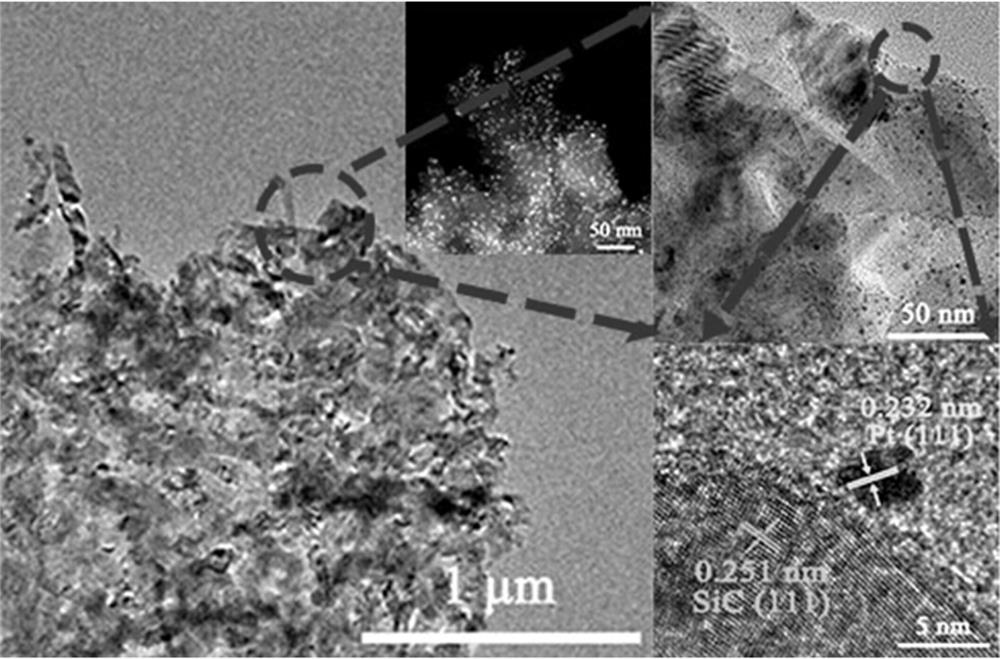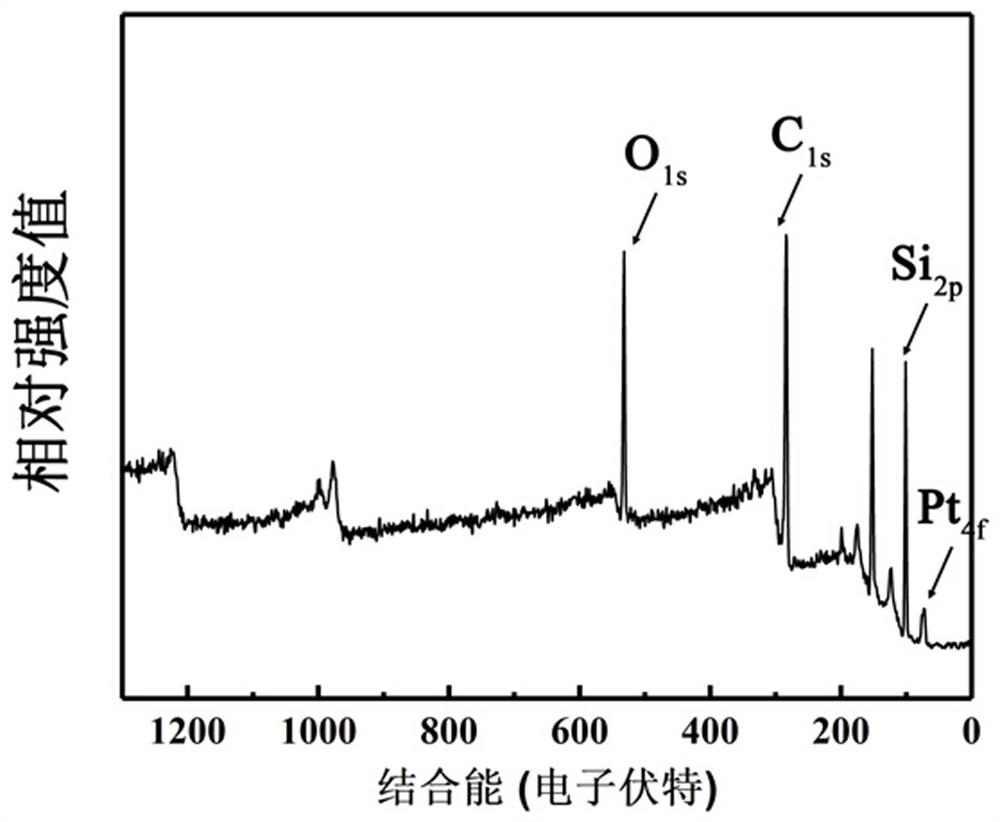Preparation method of hydrogen-sensitive sensing material based on platinum nanocluster/silicon carbide nanosheet
A technology of sensing materials and nanosheets, which is applied in the field of preparation of hydrogen-sensitive sensing materials, can solve the problems of long gas-sensing response/recovery time, complicated preparation methods, and expensive equipment, so as to improve gas sensing performance and preparation methods. Simple, cost-effective
- Summary
- Abstract
- Description
- Claims
- Application Information
AI Technical Summary
Problems solved by technology
Method used
Image
Examples
reference example 1
[0033] a) Prepare graphene oxide / silicon powder mixed solution: mix silicon powder and graphene oxide in 100 ml of deionized water at a mass ratio of 1:1, and pulverize at 40 kHz and 100 watts of ultrasonic power until the solution is uniform;
[0034] b) Freeze-drying: After freezing the above mixed solution with liquid nitrogen, transfer it to a freeze dryer for freeze-drying, and obtain a graphene oxide / silicon powder mixture after all the water is removed;
[0035] c) Carbothermal reduction: put the above-mentioned graphene oxide / silicon powder mixture in a corundum crucible, under the protection of an argon atmosphere with a flow rate of 0.1-1.0 L / min, raise the temperature to 1400 °C, keep it warm for 2.0 hours, and cool naturally to room temperature;
[0036] d) Cleaning and drying: soak the carbothermally reduced product in a concentrated nitric acid: hydrofluoric acid mixed acid solution with a volume ratio of 3:1 for 6.0 hours, then wash with deionized water and dry ...
reference example 2
[0038] a) Prepare graphene oxide / silicon powder mixed solution: mix silicon powder and graphene oxide in 100 ml of deionized water at a mass ratio of 3:1, pulverize at 40 kHz, 100 watts of ultrasonic power until the solution is uniform;
[0039] b) Freeze-drying: After freezing the above mixed solution with liquid nitrogen, transfer it to a freeze dryer for freeze-drying, and obtain a graphene oxide / silicon powder mixture after all the water is removed;
[0040] c) Carbothermal reduction: put the above-mentioned graphene oxide / silicon powder mixture in a corundum crucible, under the protection of an argon atmosphere with a flow rate of 0.1-1.0 L / min, raise the temperature to 1400 °C, keep it warm for 2.0 hours, and cool naturally to room temperature;
[0041] d) Cleaning and drying: soak the carbothermally reduced product in a concentrated nitric acid: hydrofluoric acid mixed acid solution with a volume ratio of 3:1 for 6.0 hours, then wash with deionized water and dry to obta...
reference example 3
[0043] a) Prepare graphene oxide / silicon powder mixed solution: mix silicon powder and graphene oxide in 100 ml of deionized water at a mass ratio of 3:1, pulverize at 40 kHz, 100 watts of ultrasonic power until the solution is uniform;
[0044] b) Freeze-drying: After freezing the above mixed solution with liquid nitrogen, transfer it to a freeze dryer for freeze-drying, and obtain a graphene oxide / silicon powder mixture after all the water is removed;
[0045] c) Carbothermal reduction: put the above-mentioned graphene oxide / silicon powder mixture in a corundum crucible, under the protection of an argon atmosphere with a flow rate of 0.1-1.0 liters / min, heat up to 1500 °C, keep it warm for 3.0 hours, and cool naturally to room temperature;
[0046] d) Cleaning and drying: soak the carbothermally reduced product in a concentrated nitric acid: hydrofluoric acid mixed acid solution with a volume ratio of 3:1 for 6.0 hours, then wash with deionized water and dry to obtain the si...
PUM
| Property | Measurement | Unit |
|---|---|---|
| particle diameter | aaaaa | aaaaa |
Abstract
Description
Claims
Application Information
 Login to View More
Login to View More - R&D
- Intellectual Property
- Life Sciences
- Materials
- Tech Scout
- Unparalleled Data Quality
- Higher Quality Content
- 60% Fewer Hallucinations
Browse by: Latest US Patents, China's latest patents, Technical Efficacy Thesaurus, Application Domain, Technology Topic, Popular Technical Reports.
© 2025 PatSnap. All rights reserved.Legal|Privacy policy|Modern Slavery Act Transparency Statement|Sitemap|About US| Contact US: help@patsnap.com



